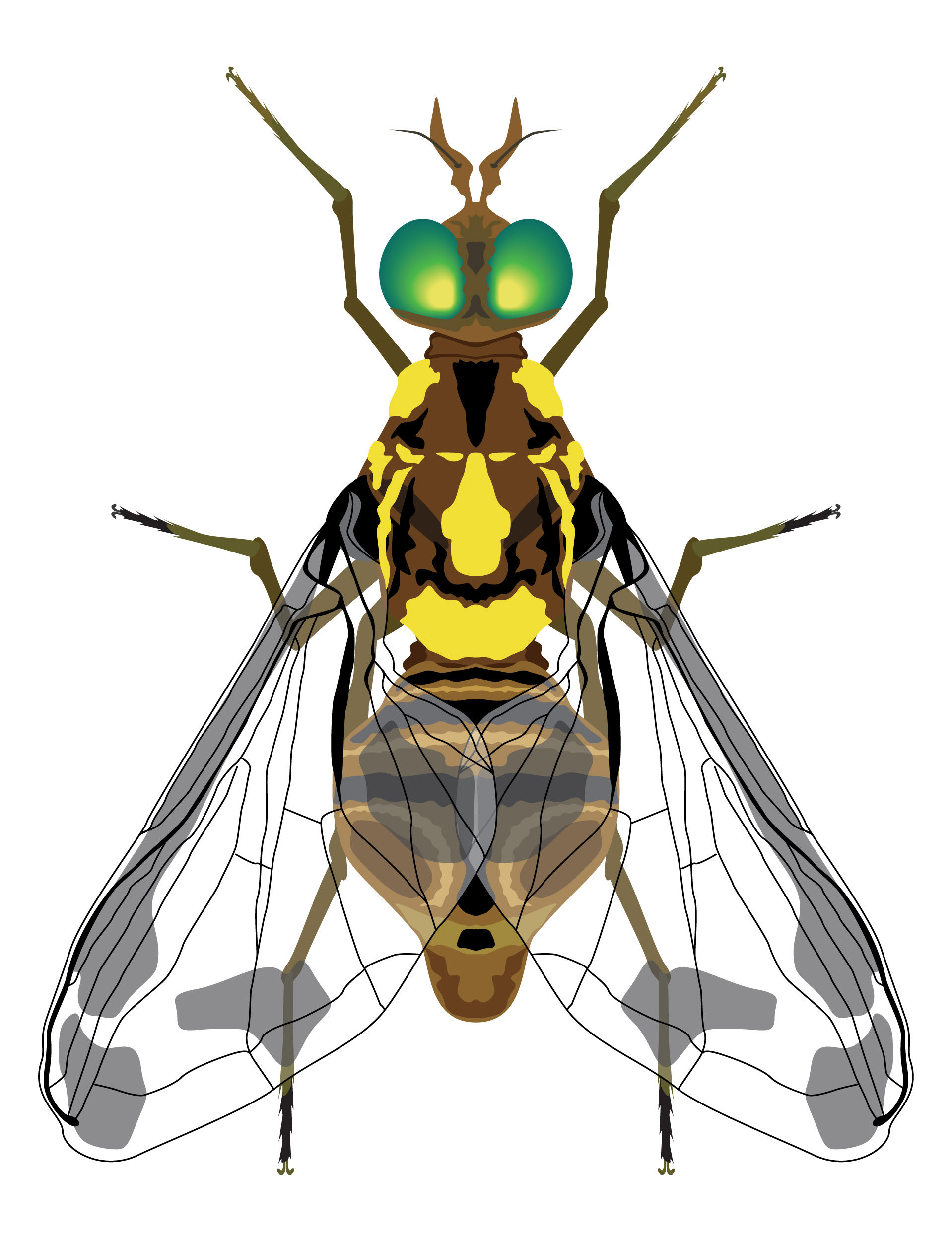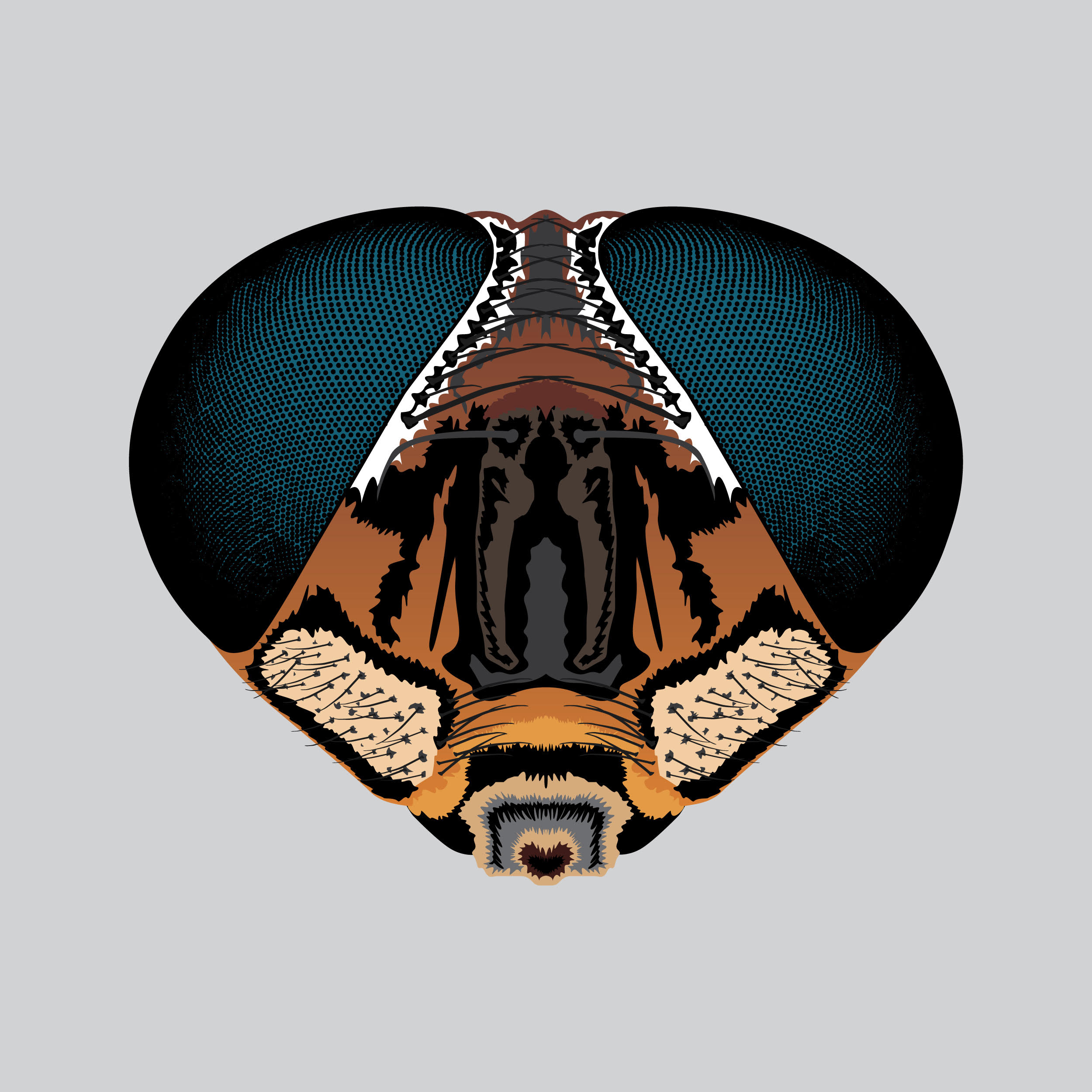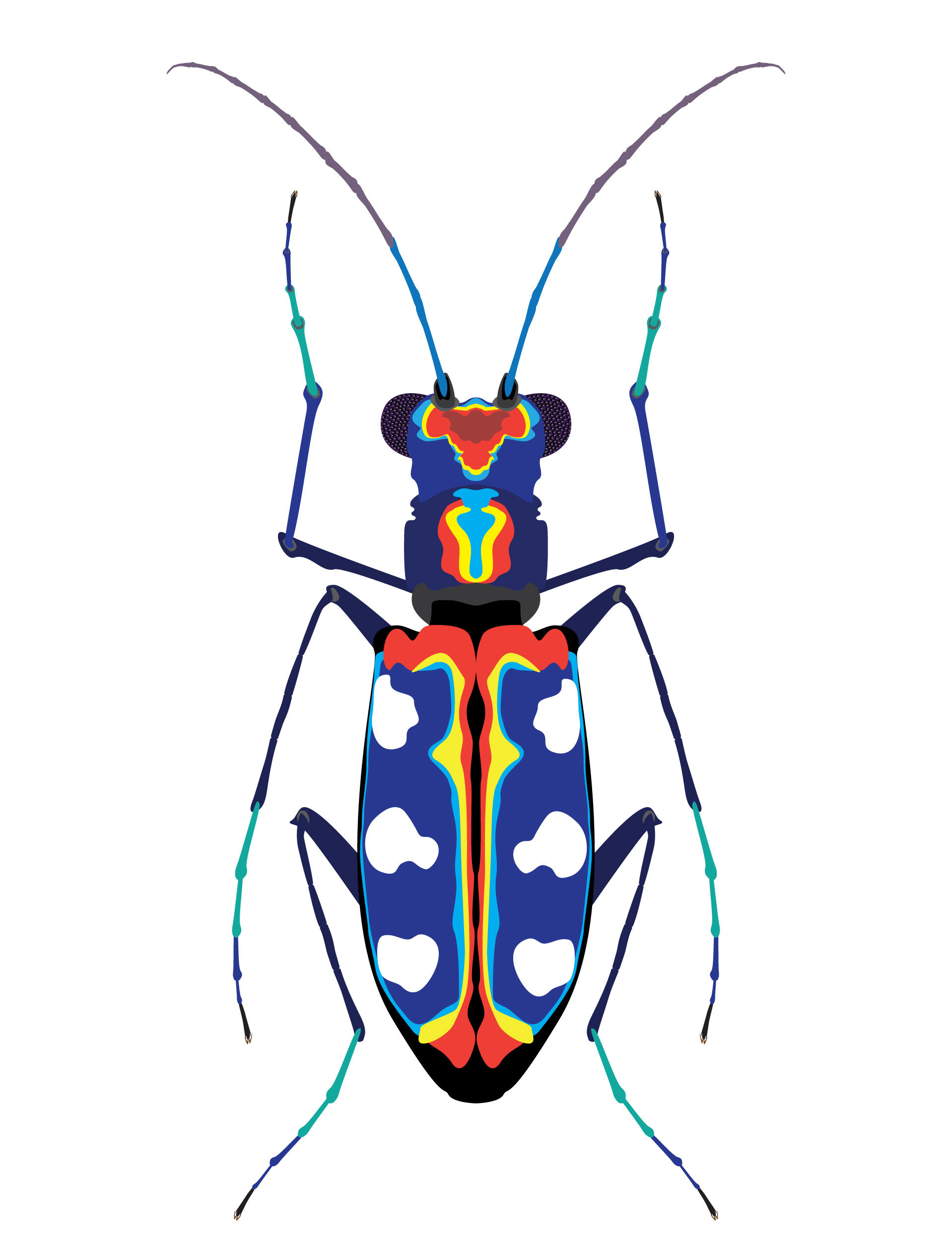Focus: Simon Tyler Interview

Focus explores the creative talent within the climbing community.
British climber Simon Tyler has made a career from illustration. What started as a side project while he worked as a graphic designer quickly led to a publishing deal. His latest book Bugs is published by Pavilion Books and available September 7th.
How did you become an illustrator?
Illustration, along with writing and designing books, was my big plan when I was a kid. For reasons that remain largely inexplicable, I departed from this trajectory in my early teens, and it took about twenty years to reacquire it. By that point I was working in graphic design. I launched a poster project called Atomic Printworks (http://atomicprint.com) in 2013 which got some really good publicity, and that led to a publishing deal to write and illustrate a series of kids non-fiction books.
How would you describe your style and where do you take your inspiration and influences from?
Having come to illustration from graphic design, I think my work tends to be quite bold, clean and neat. I guess I’m aiming for a kind of slickness, whether that comes from bright, flat colour, or symmetry, or something else. It’s still evolving though, and some of the things I’m working on currently are a bit looser, with more of a hand-drawn look. But I’m definitely the opposite of an ink and watercolour illustrator.
In terms of influences, again a lot of it comes from graphic design. Alan Fletcher was a total genius. Also people like Herb Lubalin, Stefan Sagmeister, Saul Bass and Peter Saville. Designers Republic too - their Idea magazine Special Projects book is one of my most prized possessions. In terms of illustration, it’s quite a broad sweep, from the whimsy of John Vernon Lord and Richard Scarry to more cutting-edge stuff like Craig & Karl, and Kate Moross. Recently, I’ve also been looking at the classics of scientific illustration - things like Ernst Haeckel’s Kunstformen der Natur, and Maria Sibylla Merian’s Der Raupen wunderbare Verwandlung und sonderbare Blumennahrung.
How do you develop your individual pieces from idea to execution and how do the larger projects such as your new book Bugs come together?
The bug book started out as a poster idea. I was looking at pictures of insects with my daughter, and saw this amazing brightly-coloured tiger beetle. I thought it would make a decent large format print, so I found as many photos of it as possible, and then got to work. Things like that seem to move very fast and effortlessly from idea to completion. The infographics I do can be a lot more tortured, as there’s the added issue of whether what you’re trying to do is ever going to work—in the sense that you’re trying to communicate a concept, or explain a process. I’ve been working on some space-related work over the past few months which is right at my limit of understanding, and it takes a lot of trial and error to figure out whether something is possible or not, or even worth doing.
The Bugs book obviously became a much bigger project, but still a relatively straightforward one. In many ways, that’s the beauty of children’s non-fiction.I find it quite easy (and very enjoyable) taking an initial idea—a book about insects—and then figuring out what you can fit into something with however many pages of so and so dimensions. Then some structure starts to emerge, and I produce a few spreads to discuss with my editor. Then a visual theme gets established, along with elements that can be repeated. And then it becomes a process of producing a lot of work. And in that book, there was a load of work. Some of the bugs took two to three days to complete, and with eight on a spread, you can imagine how long it took to finish.
That kind of work takes real commitment and patience and must be frustrating at times. Do you think it's important to operate outside your comfort zone, at the limit of your understanding, to continue to develop your creative ideas and style?
I think it’s important to be able to analyse how you’re working and whether it’s actually worth pushing on with it at any particular point. I think across the creative industries, most of the people who are doing well are the ones who are quite businesslike in their self-analysis. The barriers to entry across disciplines including illustration, graphic design, film making, etc have become lower because of technology and software. So, if you want to stand out, you need to be sure that what you-re working on—if its speculative work, of which I find myself doing a lot of—is good, original and likely to result in a commission. I’ve learned the hard way about ideas that you spend hundreds of hours on, which then end up going nowhere.
I do spend quite a lot of my time out of my comfort zone, in that I am quite happy to start working on ideas that, say, involve concepts that I don’t understand, and have to figure out as I go along. Or require illustration techniques that are hard to master, such as doing really neat isometrics.
On the other hand, there’s definitely a case for spending a chunk of time on things you’re good at. The past few days I’ve been finishing a proposal for a book about emergency vehicles, and it’s been so fun and the opposite of brain-straining conceptual stuff. But I’d probably start to find that boring after a while, so variety and having multiple projects on the go tends to work best for me.
What advice would you give to anybody looking to break into professional illustration?
Try to find non-obvious ways of getting your work in front of people. I think a lot of editors and agents like to feel they have discovered something themselves, rather than finding stuff in the obvious channels. Having a decent online portfolio and amazing Instagram are two things I would recommend. Neither of which I seem to be able to sustain myself. If you want to do books, package your ideas up into proposals and know what audience you’re aiming at. You don’t want to get invited for a meeting and end up going all Monkey Tennis as you pull random drawings out of your portfolio (I have done this. It wasn’t pretty). Learn to accept criticism, develop resilience and a thick skin.
You can preorder Simon's book from Amazon here
Editor









